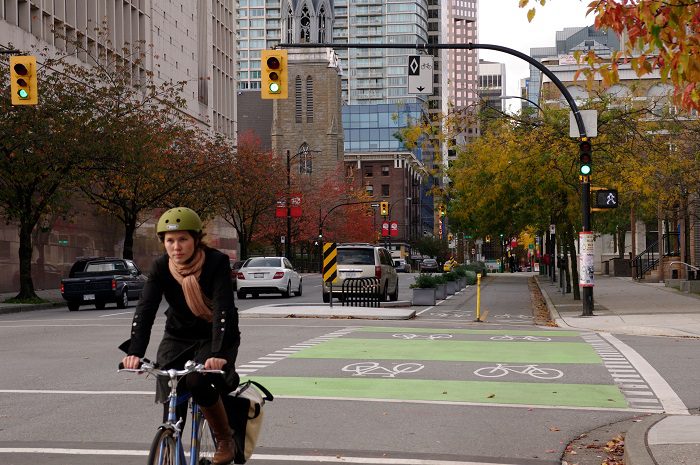British Columbia bike advocates call for a version of Ontario’s one-metre law
On the West Coast, the idea of a one-metre law has caught on


Since late last summer, Ontario made if official: motorists are required to give cyclists a metre’s space when passing, among other stipulations of a revised Highway Traffic Act.
On the West Coast, meanwhile, as evinced by the reverberations of social media, that idea has caught on.
After the CBC published a video detailing how Ontario authorities will catch those who contravene such requirements, another discussion started. In the comment thread to that post, readers, whether drivers or cyclists, rallied. Some argued that drivers are treated unfairly by such laws. Giving riders a wide berth, they said, would involve dangerously crossing the centre line into opposing traffic, presenting new dangers.
For riders, meanwhile, that’s exactly how to ensure safety. And for them, danger is nothing new.
As quoted by the CBC, Erin O’Melinn, executive director of HUB, a Metro Vancouver bike advocacy group, weighed in. “It’s actually something that we’re pushing for here in B.C.,” she said, referring to the one-metre law. “It’s indicating to motorists when you have a law like this that you can’t just squeeze by people on bikes, you have to wait until it’s safe.”
RELATED New Ontario road laws come into force Sept. 1
Although some car advocates called the idea “hypocritical” and “sick” in the same forums, according to the CBC, Ontario police agreed with O’Melinn’s position, saying that if it’s safe, crossing the centre line is what motorists should do when behind cyclists—as they would behind any other vehicle. The matter, they said, is no different than what’s required behind slower vehicles on rural stretches.
O’Melinn expanded on her thoughts. “You can go into the opposing lane if it’s safe to do so,” she told the CBC, “and if it’s not, then you need to slow down and wait until it’s safe.”
The commentary underscores a stated need among B.C. bike advocates to see such rights enshrined on their own streets. In that province, no such rules exist that determine the berth with which riders can be passed by motorists. Instead, the law of the land maintains that cyclists remain as far to the right side of the road “as is practical,” to quote the CBC.
Recently, Quebec passed its own one-metre law and stiffer fines for dooring.
